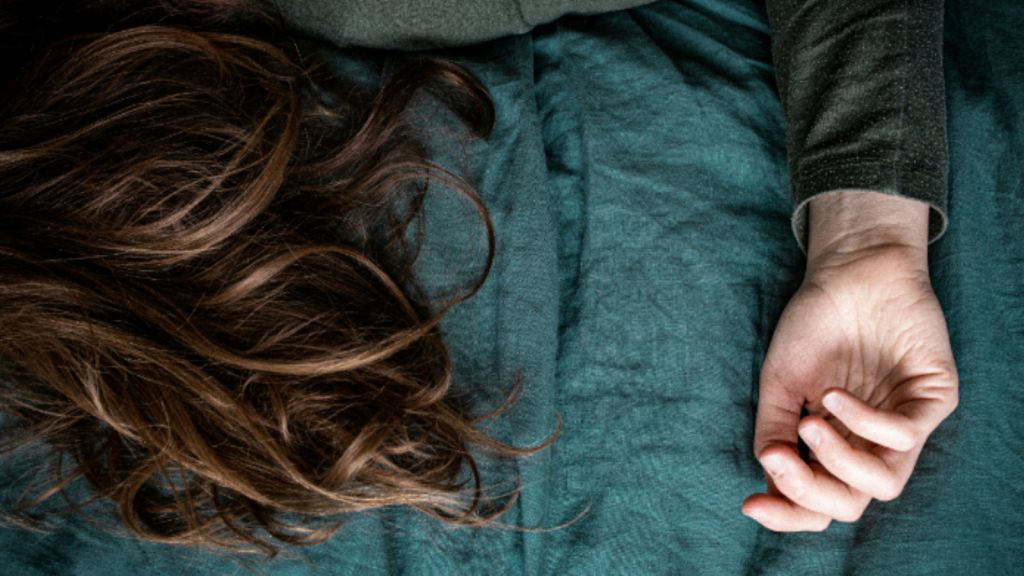 Woman led in bed
Woman led in bedEver heard of “sleepmaxxing,” the viral trend which has taken over social media?
The term, which comes from maximising sleep efficiency and duration, takes many forms online ― some wear mouth tape to “sleepmaxx,” while others swear by the “10-3-2-1 rule.”
The advice, which ranges from dubious to scientifically backed, is as varied as it can be contradictory (a side-effect of the trend’s huge boom, we reckon).
So, I thought I’d speak to Dr Chelsea Perry, owner of Sleep Solutions and a Diplomate of the American Board of Dental Sleep Medicine, sleep-specialised psychologist Dr Leah Kaylor, and neurophysiologist and sleep expert Dr Nerina Ramlakhan from Oak Tree Mobility about how the pros do it.
Dr Perry: “My sleepmaxx routine actually starts early in the morning.”
Dr Perry told HuffPost UK that her sleep routine actually begins when she wakes up.
“One of the first things I try to do is to get outside into direct sunlight. This helps regulate my circadian rhythm letting my body know it’s morning,” she shared, adding that she’ll use a SAD lamp when “it’s in the dead of winter or just a gloomy day.”
She stops looking at screens two hours before bed, and leaves a couple of hours between her last meal of the day and her bedtime.
!I keep a pretty tight sleep schedule trying to go to bed and wake up at the same time every day,” she continues.
“I keep my bedroom as dark as possible. You do not want any sources of light. Especially not a clock.”
Dr Kaylor: “My top recommendation is consistency! Consistency, consistency, consistency!”
Dr Kaylor agrees with Dr Perry ― for her, getting to bed and waking up at the same times (“even on weekends, even on holidays”) is key.
She also avoids eating later than three hours before bed, not only because it “significantly impacts the quality of sleep, particularly the deeper and more restorative phases such as deep and REM sleep”, but also because eating late at night can disrupt our digestive system’s “natural repair cycle.
Dr Kaylor also eschews booze, because it can lead to “reduced REM sleep, frequent awakenings, and shallow rest.”
The prescribing psychologist likes to take a two-hour wind-down before bed as well.
“We have a terrible habit of wanting to go-go-go all day long then expect to fall asleep immediately when it is convenient for us ― it simply doesn’t work that way,” she told us.
That “wind-down” includes dimming the lights in your home, doing relaxing hobbies like reading or knitting, taking a warm bath or shower, playing calming music, and/or meditating.
And yes ― like Dr Perry, Dr Kaylor switches her screens off long before she hits the hay.
Dr Ramlakhan: “While it’s great that people are taking their sleep seriously, there’s a balance to be struck.”
For Dr Ramlakhan, sleepmaxxing looks like, well, not worrying so much about her kip.
“I think people are obsessed with getting the perfect night’s sleep,” she told HuffPost UK.
“And not surprisingly, there’s a form of insomnia that has risen as a result, called ‘orthosomia’, a term for the obsession with getting a good night’s sleep.”
“This can often affect highly driven, perfectionist or A-type personalities. All of a sudden, sleep can become competitive.”
Trying to “maxx” out your sleep, or stressing about how many hours you get, may not even be the best way to measure a good night’s rest, never mind facilitate it, she adds.
“We need to look at rest, movement, daytime rest, nutrition, and relationships. You can’t just make up for those other areas with sleep.”
Still, the expert has five “sleep non-negotiables,” including eating within the first 30 minutes of waking up, avoiding coffee after 4 pm, drinking enough water, and aiming to get to bed between 9:30 pm and 10 pm at least three nights a week.
Like every other pro I asked, Dr Ramlakhan also said she keeps screens well away from her nighttime routine.
“Set healthy boundaries on tech: no electronics in the bedroom,” she advised.
That’s a full house for eliminating phones in bed, then (farewell to my nighttime doomscrolling...).


